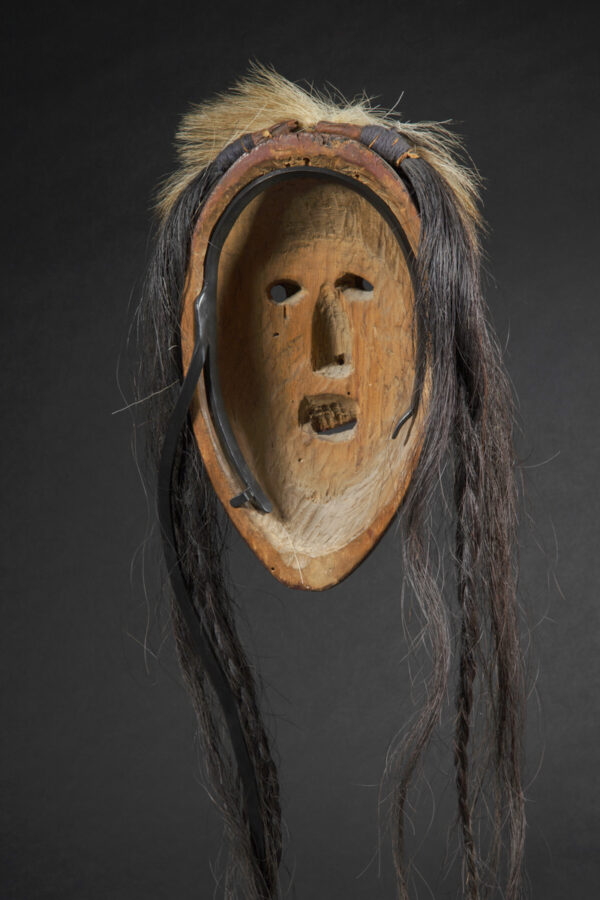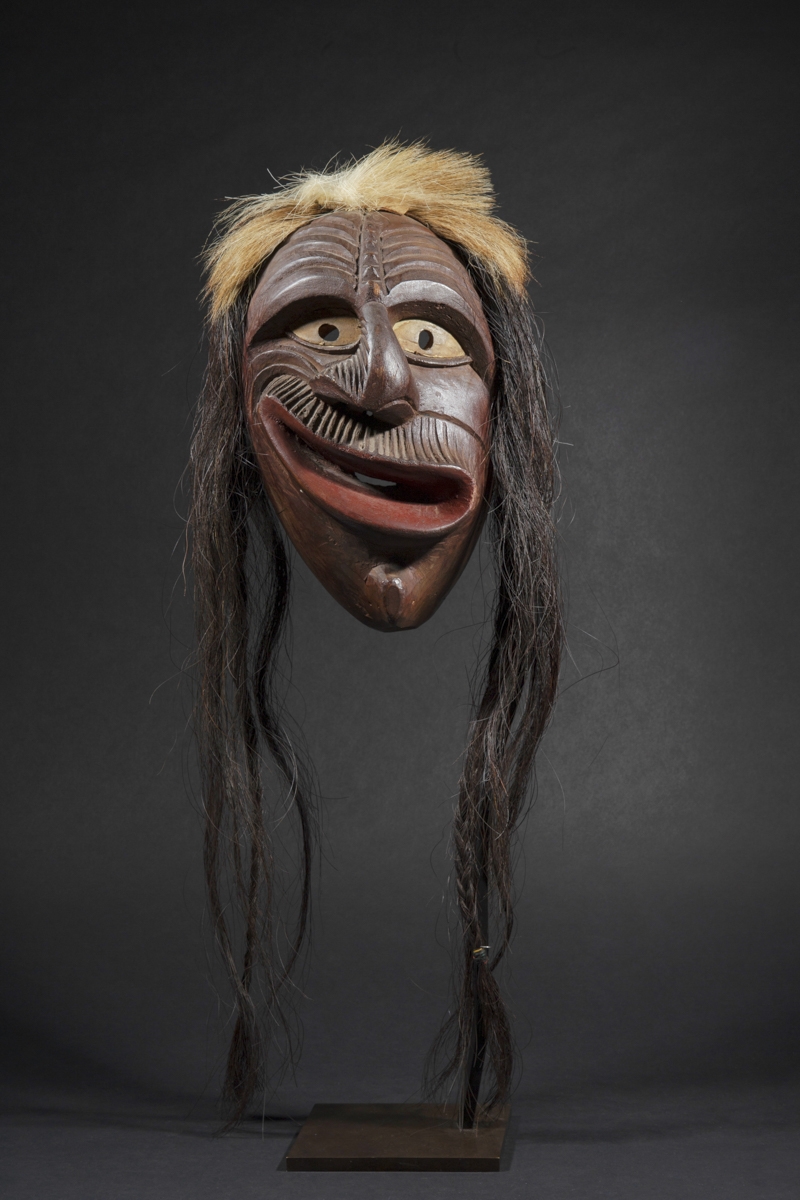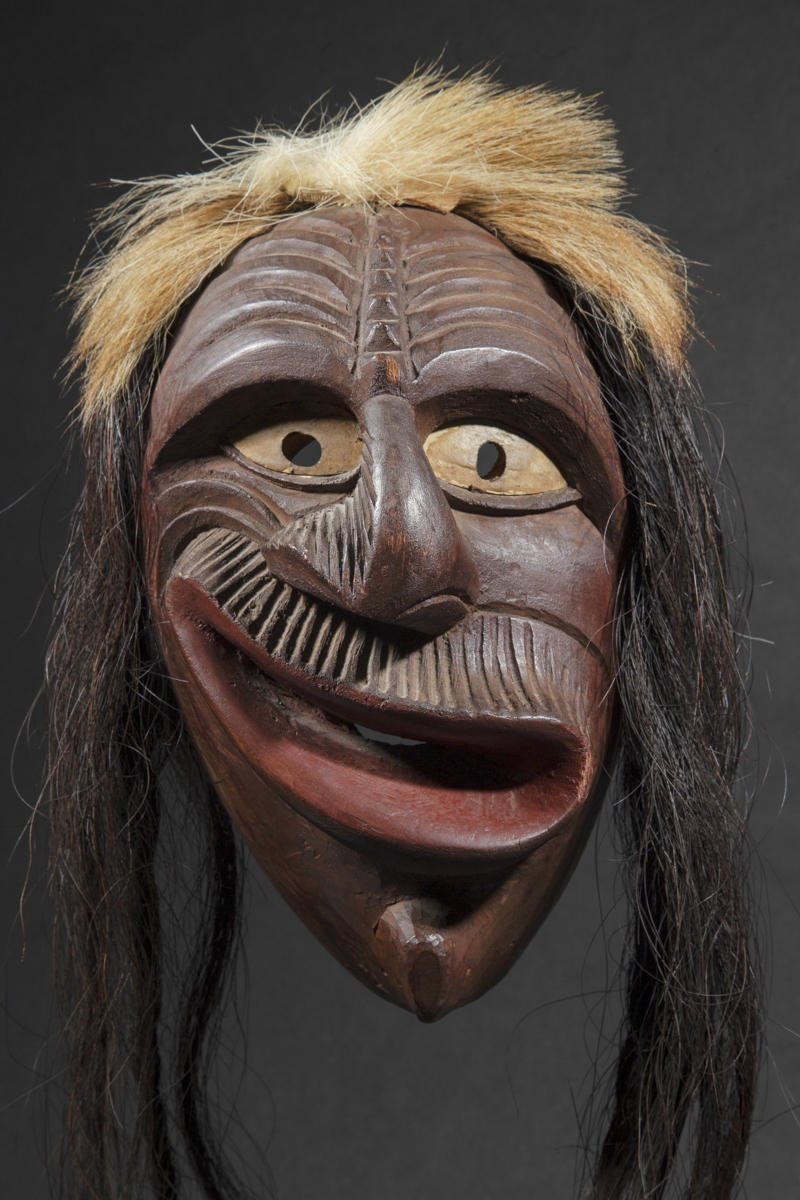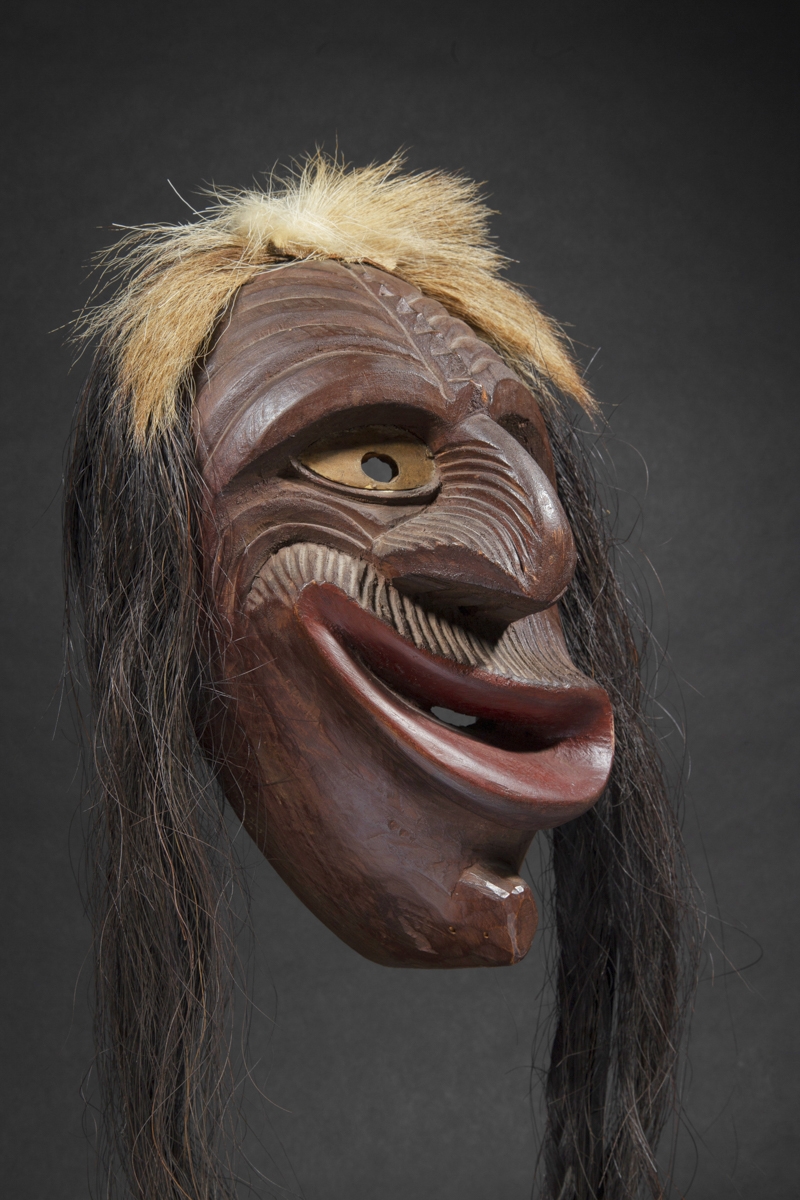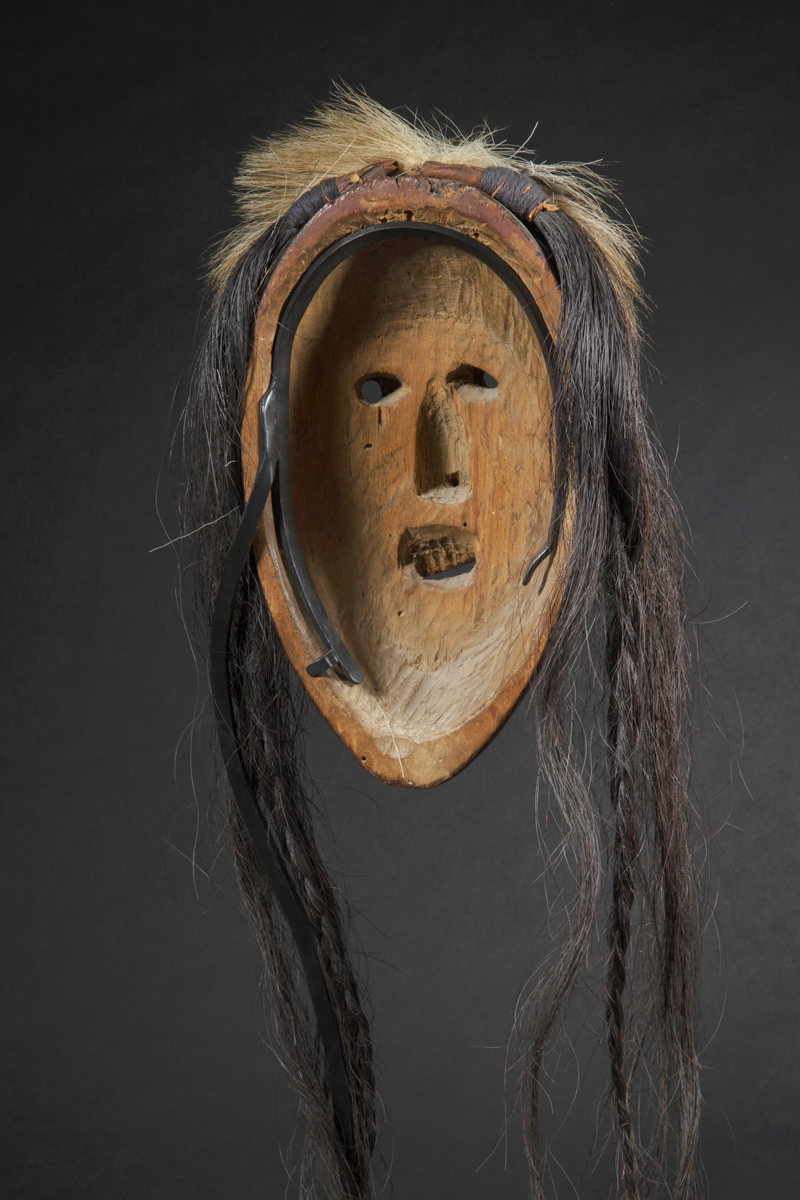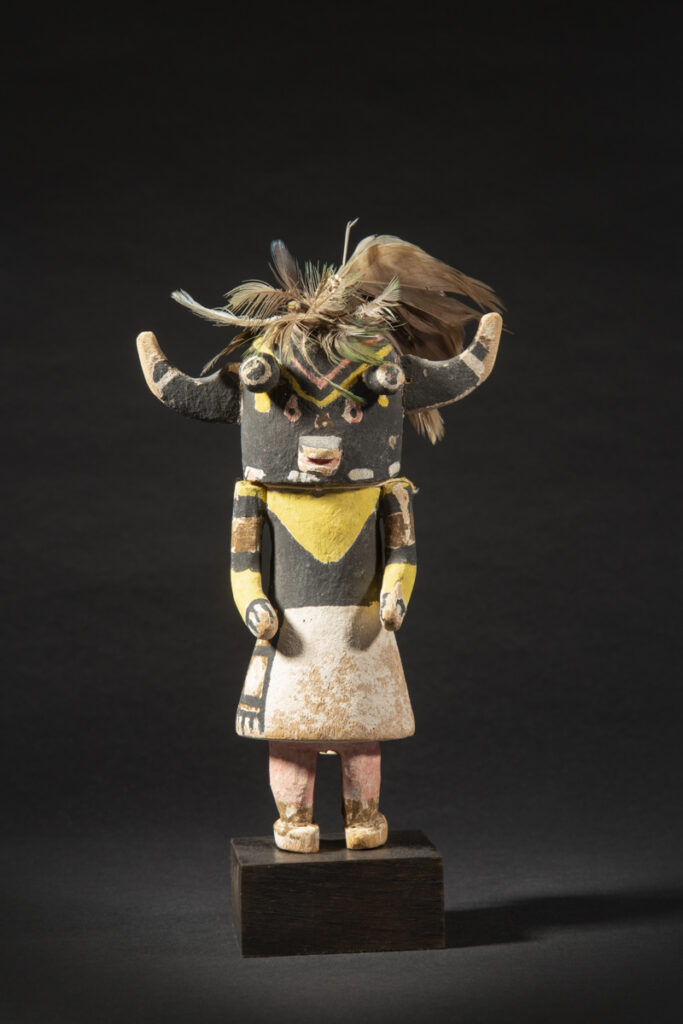North America | USA
Iroquois Mask
USA
False Face mask
Iroquois (Haudenosaunee)
Northeast, USA
Late 19th or early 20th century
Carved wood, pigments, leather, horsehair
Height: 29 cm – 11 ½ in.
Provenance
Ex Galerie Schoffel de Fabry, Paris
Ex private collection, France, acquired from the above in 2017
Iroquois mask 29 cm / Galerie Flak
Price on request
The Iroquois Confederacy (now known as Haudenosaunee), a classical matriarchal state, consisted of the Mohawk, Seneca, Onondaga, Cayuga, Oneida and Tuscarora Nations. Their ancestral homelands included Northern and Western New York, parts of Ontario and Quebec.
Wood-carved masks were the most distinctive manifestations of Iroquois religious art.
The mask shown here is associated with the False Faces, the most prominent Iroquois medicinal society. Such masks were used during communal healing rituals which focused on driving out disease and misfortune, and on restoring balance. False Face spirits were also called upon in times of personal need. False Face practitioners wore masks and carried large rattles made from a turtle shell. They spread pieces of coal and ashes and blew smoke on the sick persons.
The first Western accounts of False Face rituals date back to the late 17th century, and the tradition and ceremonies continued well into the 20th century.
These masks are extremely rare in private and museum collections.
Wood-carved masks were the most distinctive manifestations of Iroquois religious art.
The mask shown here is associated with the False Faces, the most prominent Iroquois medicinal society. Such masks were used during communal healing rituals which focused on driving out disease and misfortune, and on restoring balance. False Face spirits were also called upon in times of personal need. False Face practitioners wore masks and carried large rattles made from a turtle shell. They spread pieces of coal and ashes and blew smoke on the sick persons.
The first Western accounts of False Face rituals date back to the late 17th century, and the tradition and ceremonies continued well into the 20th century.
These masks are extremely rare in private and museum collections.
Explore the entire collection










